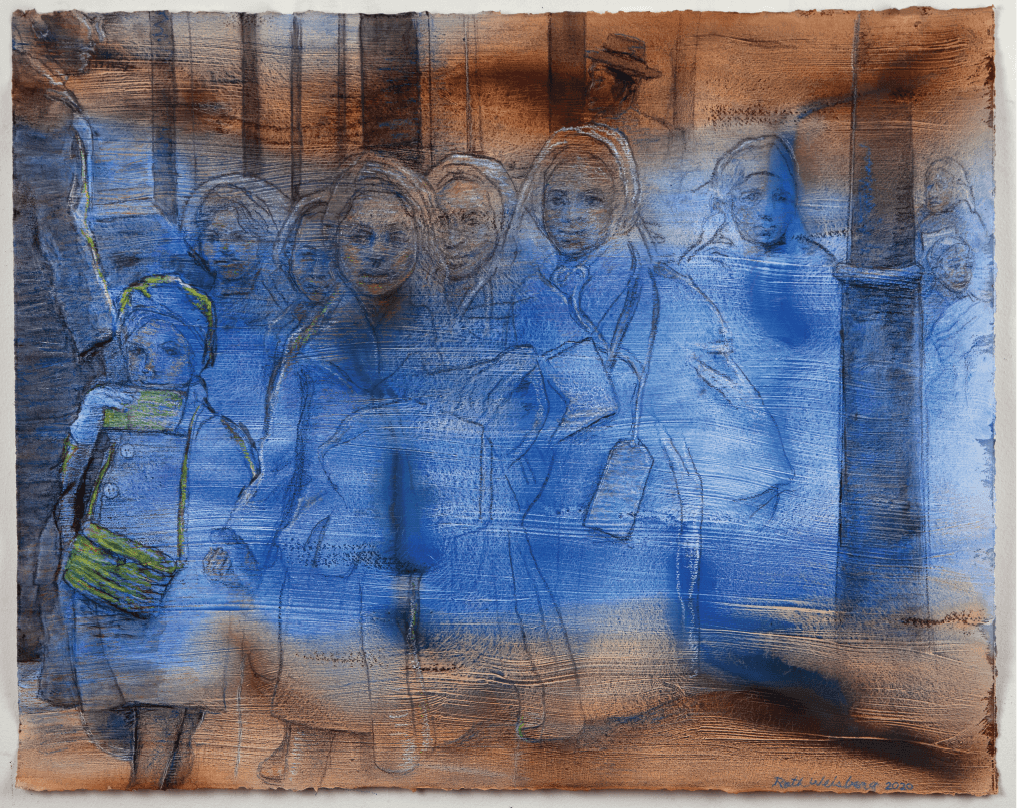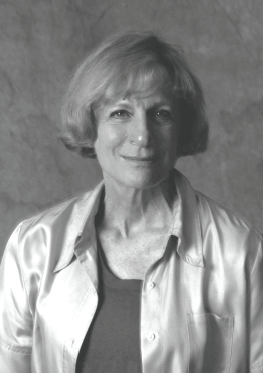Above: Detail from Archie Rand. 326: To Send the Impure from the Temple (Numbers 5:2), 2001-2006. From the series The 613. Acrylic on canvas. 20 x 16 in. Photo by Samantha Baskind
Artists on Their Art

Ruth Weisberg. Kindertransport, 2021. Oil on gessoed paper. 22 x 28 in.
I make art out of all aspects of my identity, finding in the process that art integrates my experiences, beliefs, and Jewish heritage. The history of the Jewish people and the history of art have been especially profound sources. One very recent series has been inspired by the Kindertransport, the organized rescue effort to evacuate Jewish children from the Nazi-controlled areas of Europe to the United Kingdom between 1938 and 1940. Although estimates vary, nearly 10,000 predominately Jewish children between the ages of fi ve and seventeen from Nazi Germany, Czechoslovakia, and Poland were transported to Britain by train and ship.
As always, I want my images to be recognizable but with elements of timelessness and a very affecting humanity.
This work is an oil painting on gessoed heavyweight paper and is part of a series of six paintings. Working in this manner allows me to create images that have dramatic lighting, strong figurative depictions, and very tactile surfaces. As always, I want my images to be recognizable but with elements of timelessness and a very affecting humanity. Anyone who is familiar with my art should be familiar with this technique from previous bodies of work.
I note my tendency when confronting the Holocaust to depict events and images that precede or follow the Final Solution. However tragic, there is always an element of hope. The Kindertransport children are now in their 80s or 90s. Some remained in England but many emigrated to Israel and the United States. I know them as children in my art, but I have met some in person in Los Angeles. We are all affected by history, but being Jewish makes that aspect of my work particularly poignant. It is important to me to have an emotional connection with my subject matter—to feel a shared history and identity. Even when I depict images from Renaissance art history I want my viewer to feel the humanity of the people I depict, and at the same time recognize that I evoke recent Jewish history. I hope that elements of Renaissance and post-Renaissance art will resonate in my use of gesture and facial expression. We all share a common humanity.
For me, as an artist, the great Italian, Spanish, and Flemish masters are a constant inspiration. Academic Depth
Over the years I have taken as my source of inspiration the paintings or frescos of artists such as Masaccio, Piero della Francesca, Diego Velazquez, and Jan Vermeer, among others. For me, as an artist, the great Italian, Spanish, and Flemish masters are a constant inspiration. Women artists are regretfully far rarer but I have also sought out the work of Sofonisba Anguissola, Mary Cassatt, and Kathe Kollwitz. I feel wed to the past as both an artist and a Jew.
Art at its core is an affirmation of the very best of our collective past and our humanity. I find the interweaving of the past and present to be endlessly thought provoking and a real source of inspiration. I feel truly blessed to be an artist.

RUTH WEISBERG is professor of Fine Arts and director of the USC Initiative for Israeli Arts and Humanities at the University of Southern California. She founded the Jewish Artists Initiative of Southern California in 2004. Her work is in sixty major museum collections including the Art Institute of Chicago; the Biblioteque Nationale of France, Paris; Istituto Nationale per la Grafica, Rome; the Los Angeles County Museum of Art, the Norwegian National Museum, Oslo; the Metropolitan Museum of Art; the National Gallery, Washington, DC; and the Whitney Museum.